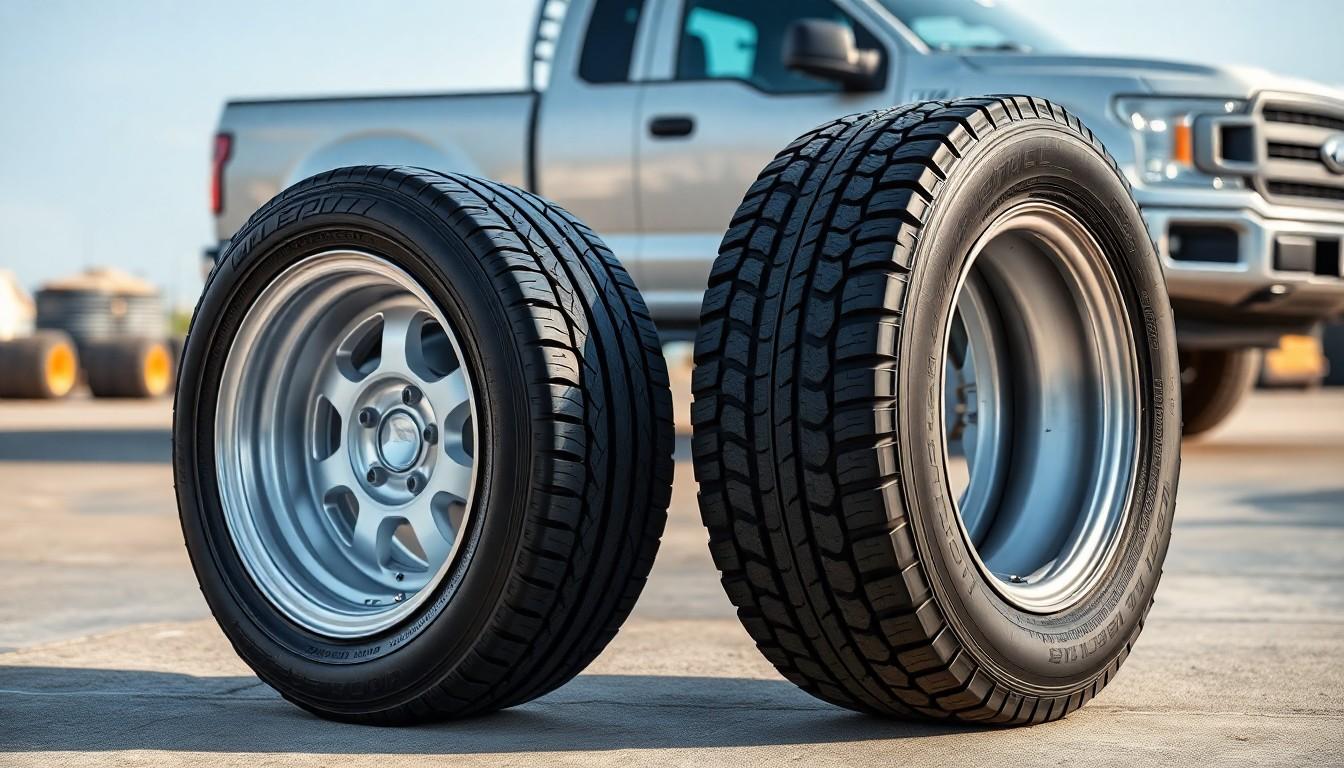Choosing the right tires for your vehicle can significantly impact your driving experience, safety, and wallet. When comparing SL vs C1 tires, we’re looking at two different load ratings that determine how much weight your tires can safely handle.
We’ve researched extensively to bring you the definitive guide on these tire classifications. SL (Standard Load) tires are commonly found on passenger vehicles, while C1 (Commercial) tires are designed for light trucks and commercial applications. Understanding the difference isn’t just about technical specifications—it’s about ensuring you get the performance, durability, and safety you need for your exact driving conditions.
Understanding SL and C1 Tire Classifications
Tire classifications serve as crucial identifiers that convey exact information about a tire’s intended use, load capacity, and performance characteristics. SL (Standard Load) and C1 (Commercial) represent two distinct tire classifications that address different vehicle requirements and applications.
SL tires are engineered specifically for passenger vehicles including sedans, coupes, and crossovers. These tires operate at standard inflation pressures, typically 35-44 PSI, and are designed to prioritize comfort, noise reduction, and fuel economy. Manufacturing processes for SL tires focus on creating a balanced product that delivers adequate performance across various driving conditions while maintaining ride quality.
C1 tires, on the other hand, are constructed for light commercial vehicles and trucks that carry heavier loads. These commercial-grade tires feature reinforced sidewalls, more robust internal structures, and operate at higher inflation pressures ranging from 50-80 PSI. The engineering behind C1 tires emphasizes durability and load-bearing capacity over the refined ride experience found in SL options.
The fundamental difference between these classifications lies in their load ratings and intended applications. SL tires support standard passenger vehicle weights with load indexes typically between 75-105 (approximately 850-2,000 pounds per tire). C1 tires offer significantly higher load capacities with indexes commonly ranging from 100-120 (approximately 1,750-3,000 pounds per tire), making them suitable for delivery vans, pickup trucks with regular hauling needs, and light commercial vehicles.
Regulatory standards also differ between these classifications, with C1 tires adhering to more stringent requirements about load capacity verification and durability testing. These differences reflect the distinct performance expectations and safety considerations associated with passenger versus commercial vehicle operations.
Key Differences Between SL and C1 Tires
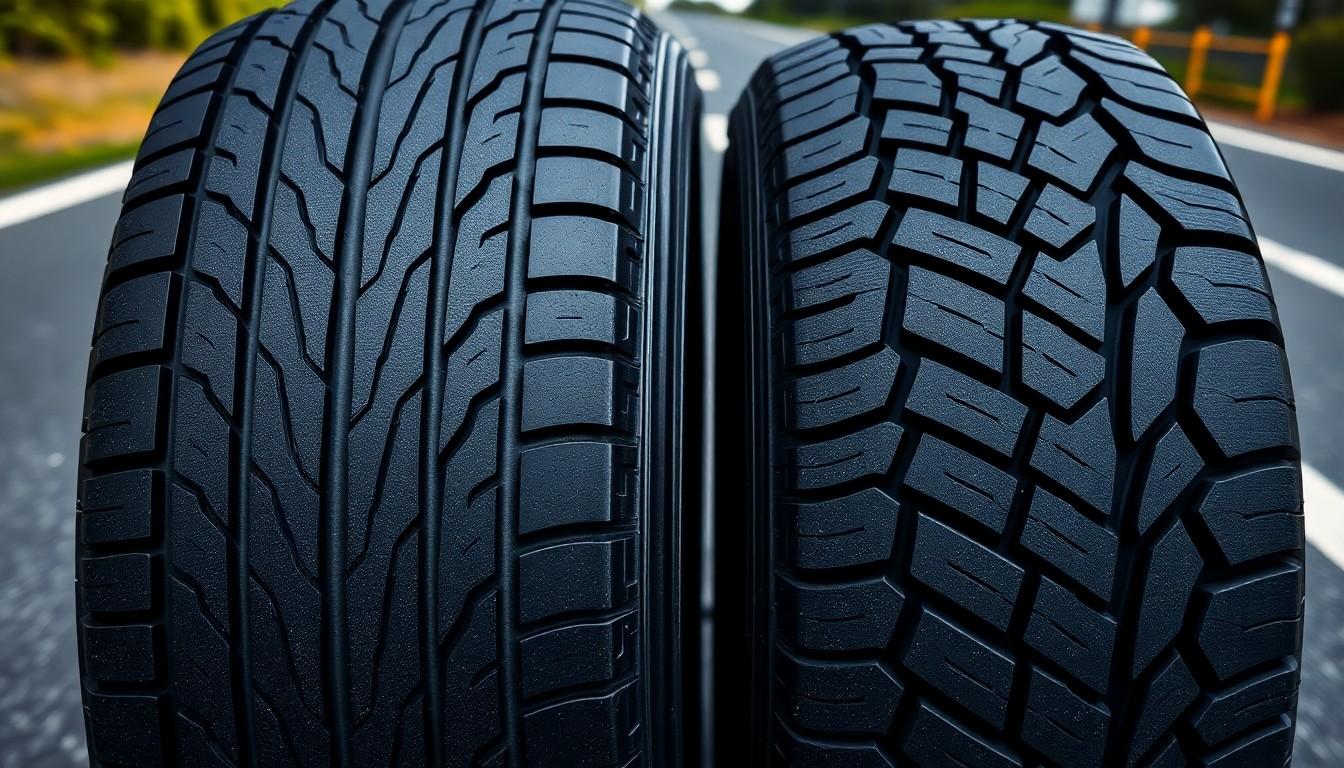
SL (Standard Load) and C1 (Commercial) tires differ significantly in their design specifications and intended applications. These differences affect everything from load capacity to ride quality and vehicle compatibility.
Performance Characteristics
SL tires provide adequate traction and handling for everyday driving conditions and are optimized for passenger vehicles with lighter loads. Their design focuses on delivering a smooth, comfortable ride quality that enhances the driving experience on highways and city streets. C1 tires offer enhanced stability and durability, particularly when carrying heavy loads or during towing operations. Even though their “Light Load” designation, C1 tires actually support higher loads than SL tires but may deliver reduced grip in challenging road conditions compared to their SL counterparts.
Fuel economy varies between these tire types as well. SL tires typically promote better fuel efficiency due to their construction and intended use with lighter vehicles. C1 tires often feature a shallower tread pattern that helps reduce road noise and can contribute to a quieter driving experience, creating a more pleasant environment inside the vehicle.
Load Capacity and Durability
SL tires support standard load capacities with inflation pressures up to 35 psi, making them ideal for typical passenger cars and sedans. These tires aren’t designed to handle excessive loads, which can result in premature wear patterns or potential tire failure if consistently overloaded. C1 tires feature significantly higher load-carrying capacities suitable for SUVs, crossovers, and light trucks that regularly carry heavier cargo.
Durability differences between these tire types are substantial. C1 tires are constructed with stronger fabric layers and steel belts specifically engineered to provide stability and longevity under demanding load conditions. Their construction allows them to maintain performance even when subjected to the stresses of heavier vehicles. SL tires, while durable for their intended applications, don’t offer the same level of robustness when it comes to handling heavy loads or supporting towing activities regularly.
Fuel Efficiency Comparison
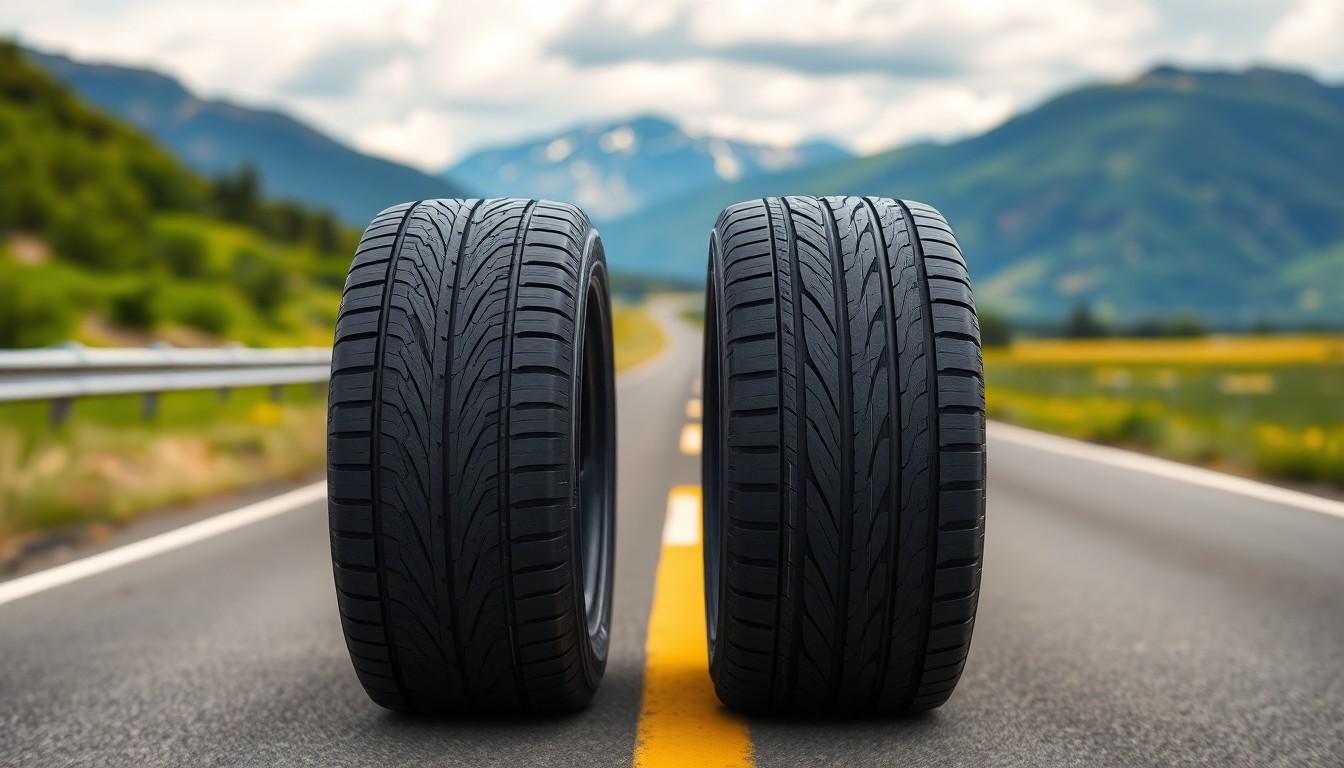
SL (Standard Load) and C1 (Light Load) tires differ significantly in how they impact your vehicle’s fuel economy. SL tires are engineered for a balance of comfort and fuel efficiency under standard loads, while C1 tires offer potential advantages in exact light-load applications.
Rolling Resistance
Rolling resistance directly affects how much fuel your vehicle consumes during operation. C1 tires typically feature shallower tread patterns that contribute to lower rolling resistance compared to their SL counterparts. This reduced resistance means the engine doesn’t have to work as hard to move the vehicle forward, translating into measurable fuel savings over time. Many drivers notice this efficiency benefit particularly in light-load scenarios where C1 tires can perform optimally. The specialized construction of C1 tires creates less friction against the road surface, minimizing energy loss during travel.
Eco-Friendly Design Elements
Both tire types incorporate eco-conscious design elements, though they approach sustainability differently. SL tires use materials and construction techniques that minimize energy loss and enhance fuel economy across a wide range of driving scenarios. Their composition prioritizes reducing environmental impact while maintaining performance under standard load conditions. C1 tires, conversely, feature specialized insulating rubber compounds, robust fabric layers, and steel belts that optimize performance specifically for lighter loads. These construction choices not only contribute to improved fuel efficiency but also result in quieter operation. Manufacturers have increasingly focused on developing both tire types with environmentally responsible materials without compromising their distinct performance characteristics.
Price Points and Value Analysis
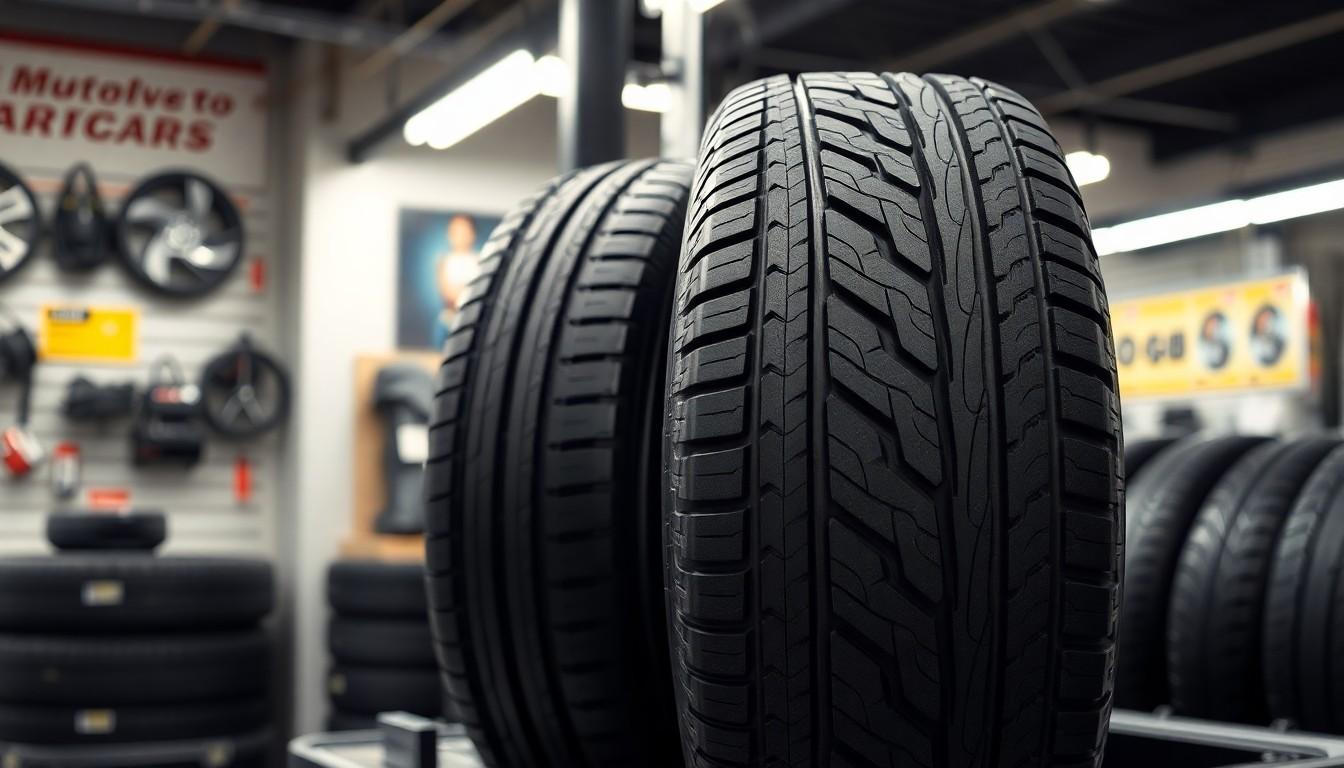
SL tires typically cost less than C1 tires due to their standard load design that doesn’t require additional reinforcement materials. The simplified construction of SL tires makes them more economical to produce, resulting in lower retail prices for consumers. C1 tires, while often priced higher, offer specialized benefits for light-duty vehicles including improved fuel economy and reduced road noise.
When analyzing value, SL tires present an excellent option for vehicles operating primarily under standard load conditions. These tires deliver a comfortable ride experience and decent fuel economy at a more affordable price point. Many crossover and passenger vehicle owners find SL tires sufficient for their daily driving needs without the premium cost of specialized tires.
C1 tires offer superior value for light-duty vehicles where fuel efficiency and quiet operation are priorities. Though the initial investment may exceed that of SL tires, the performance benefits can justify the additional cost for exact applications. Their specialized construction with insulating rubber compounds and optimized structural elements contributes to their performance advantages at lower loads up to 30 psi.
The price difference between these tire types varies by manufacturer, brand reputation, and exact tire models. Premium tire manufacturers often command higher prices regardless of load rating, while budget brands might offer both tire types at more competitive price points. Seasonal sales and promotions frequently affect the actual price gap between SL and C1 options at retail.
Ideal Vehicles for SL vs C1 Tires

Choosing the right tire type depends significantly on your vehicle and its typical usage. SL and C1 tires are engineered for different vehicle categories based on their load requirements and performance characteristics.
Passenger Cars and Sedans
Passenger cars and sedans typically benefit most from SL (Standard Load) tires. These tires support up to 35 psi, making them perfectly suited for the weight and performance needs of everyday passenger vehicles. SL tires deliver a smooth, comfortable ride quality that enhances the driving experience of sedans and similar vehicles. Their design prioritizes balanced performance aspects like fuel economy, road noise reduction, and handling on paved surfaces. Most modern sedans come factory-equipped with SL tires because they offer the ideal combination of comfort and capability for vehicles that don’t regularly carry heavy loads.
SUVs and Light Trucks
Vehicle weight and typical cargo determine the best tire choice for SUVs and light trucks. Lighter SUVs and trucks that rarely carry heavy loads operate efficiently with SL tires, which provide adequate load capacity while maintaining ride comfort and fuel efficiency. C1 tires serve as specialized options for very light-duty SUVs or smaller trucks with minimal load-bearing requirements, supporting up to 30 psi. These tires feature insulating rubber, strong fabric layers, and steel belts that enhance fuel economy and reduce road noise. Their lower load capacity makes C1 tires less common in this vehicle category, as most SUVs and light trucks require more robust load-bearing capabilities. Vehicles that frequently carry cargo or passengers near their maximum capacity generally perform better with SL tires rather than C1 alternatives.
Seasonal Performance Considerations
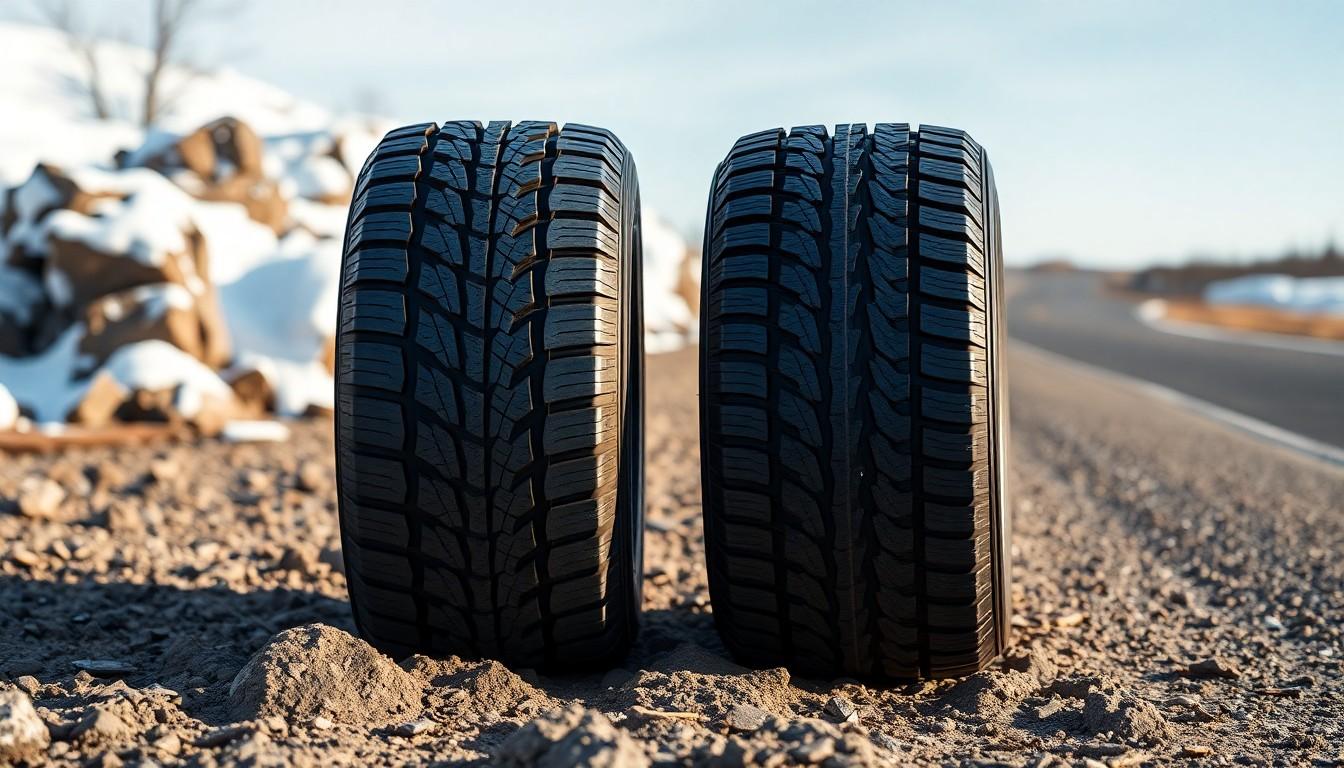
Winter Weather Handling
SL tires offer better traction in extreme weather conditions than C1 alternatives. Their higher load capacity of up to 35 psi provides improved stability when handling through snow, ice, or heavy rain. Deep tread patterns commonly found on SL tires create better grip on slippery surfaces, making them more reliable during harsh winter months. Drivers in regions with frequent snowfall typically experience enhanced control with SL tires due to their superior weight distribution capabilities.
Summer Performance Characteristics
C1 tires deliver exceptional fuel efficiency during warmer months thanks to their specialized design. Their shallower tread pattern reduces rolling resistance on dry, paved roads, contributing to quieter operation and increased gas mileage. Light-duty vehicles benefit from C1 tires’ insulating rubber compounds that maintain optimal performance in hot conditions. Many drivers report smoother highway cruising with C1 tires during summer months when road conditions remain consistently favorable.
All-Season Adaptability
SL tires demonstrate greater versatility across changing seasons compared to C1 options. Their standard load rating accommodates various driving conditions from spring showers to light winter snow without requiring seasonal tire changes. Everyday commuters appreciate SL tires’ balanced performance that handles occasional off-road detours while maintaining comfort on regular pavement. Urban drivers facing unpredictable weather patterns throughout the year find SL tires provide reliable traction regardless of seasonal challenges.
Transitional Weather Considerations
C1 tires perform adequately during mild transitional seasons but show limitations in extreme conditions. Their light load rating of 30 psi works well in spring and fall when roads are generally dry with occasional light precipitation. The specialized fabric layers in C1 tires provide sufficient insulation for temperature fluctuations typical of shoulder seasons. Drivers who primarily travel on well-maintained roads through moderate climate zones can rely on C1 tires’ consistent performance during seasonal transitions.
Longevity and Maintenance Requirements
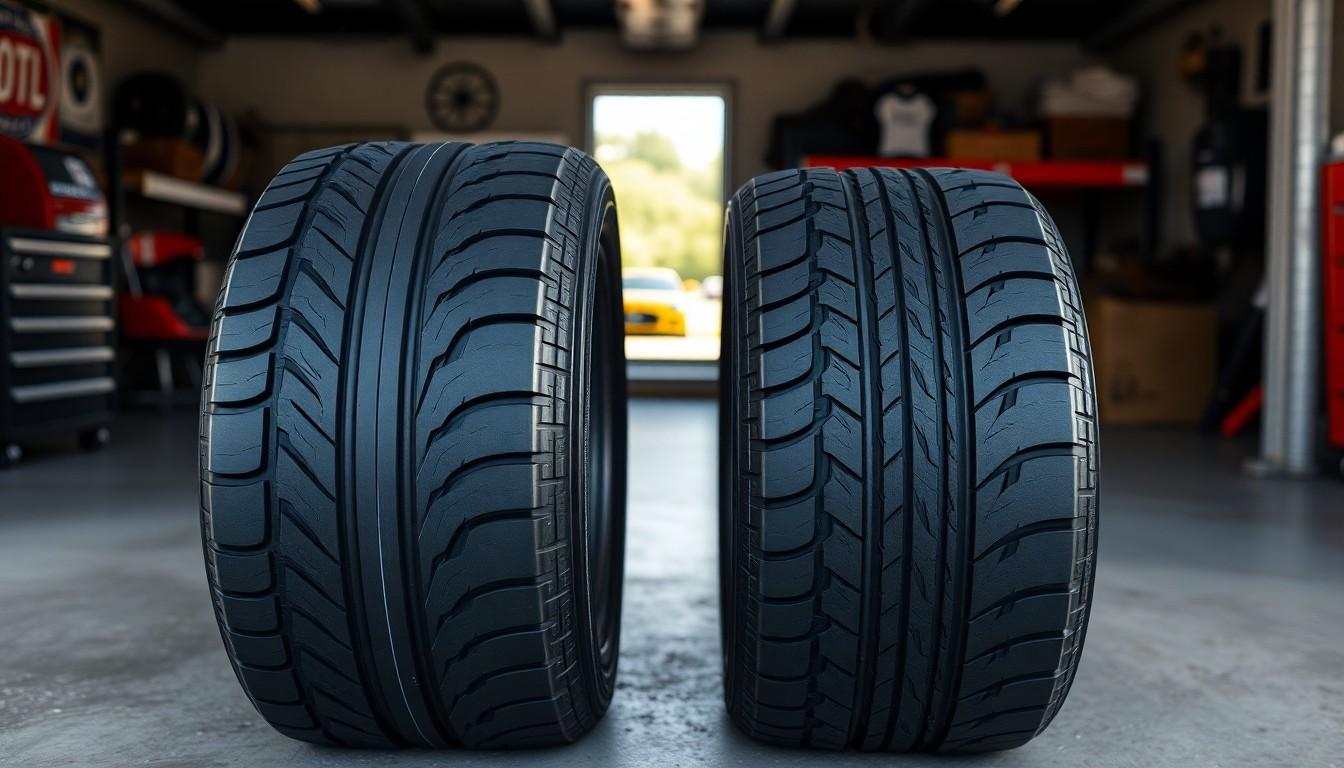
SL (Standard Load) and C1 (Light Load) tires exhibit important differences in durability and upkeep needs based on their design specifications. SL tires can handle inflation pressures up to 35 psi and support higher loads, making them suitable for standard vehicle weights. Their performance optimization for standard loads provides a comfortable ride, but they’re susceptible to premature wear when overloaded or underinflated.
C1 tires operate at a lower maximum pressure of 30 psi with reduced load capacity compared to SL variants. These light-duty tires feature shallower tread patterns that enhance fuel economy and minimize road noise. Longevity of C1 tires depends largely on using them within their specified weight limits, as exceeding these boundaries accelerates wear.
Both tire types require consistent maintenance routines for maximum lifespan:
- Regular pressure checks to maintain recommended inflation levels
- Scheduled tire rotations to promote even tread wear
- Periodic inspections for damage or excessive wear patterns
- Strict adherence to load capacity guidelines
The cost-effectiveness of each tire type varies based on usage patterns. SL tires typically demonstrate greater durability under standard loads but may deteriorate faster if frequently overloaded. C1 tires can deliver extended service life when used exclusively for light-duty applications but wear rapidly when subjected to heavier loads or off-road conditions.
Proper maintenance plays a crucial role in maximizing longevity for both tire categories. Adherence to manufacturer-specified pressure and load limits represents the most important factor in determining how long either tire type will last under real-industry conditions.
Conclusion
Selecting between SL and C1 tires comes down to understanding your vehicle’s needs and your driving habits. SL tires offer the balanced performance most passenger vehicles require with standard inflation pressures and load capacities suited for everyday use.
C1 tires shine in specialized light-duty applications where fuel efficiency and reduced road noise take priority even though their lower load ratings.
Remember that proper maintenance is essential regardless of which tire type you choose. By matching the right tire classification to your exact requirements you’ll optimize your vehicle’s performance safety and operating costs over time.
The right choice ensures you’re getting maximum value while maintaining the driving experience you expect from your vehicle.
Frequently Asked Questions
What’s the main difference between SL and C1 tires?
SL (Standard Load) tires are designed for passenger vehicles with inflation pressures of 35-44 PSI, while C1 (Commercial) tires are built for light trucks and commercial use with higher pressures of 50-80 PSI. SL tires focus on comfort and fuel economy, whereas C1 tires have reinforced sidewalls to support heavier loads. Their load indexes also differ significantly, with SL ranging from 75-105 and C1 from 100-120.
Which tire type offers better fuel efficiency?
SL tires generally provide better fuel efficiency for standard passenger vehicles under normal conditions. C1 tires excel in fuel efficiency specifically in light-load applications due to their shallower tread patterns that reduce rolling resistance. For everyday driving without heavy loads, SL tires offer a good balance of comfort and fuel economy, while C1 tires may provide superior efficiency for specific light commercial applications.
Are C1 tires more durable than SL tires?
Yes, C1 tires offer superior durability due to their reinforced construction designed to withstand commercial use and heavier loads. They feature stronger sidewalls and more robust materials that can handle the demands of light trucks and commercial vehicles. SL tires, while durable for passenger vehicles, aren’t designed for excessive loads and will wear prematurely if regularly used beyond their specified capacity.
Which tire type is better for winter driving?
SL tires generally provide better traction in extreme weather conditions, including winter driving. Their deeper tread patterns offer improved grip in snow and ice compared to C1 tires. If you live in an area with harsh winters, SL tires are typically the more reliable choice. For severe winter conditions, consider dedicated winter tires regardless of the load classification.
How much more do C1 tires cost compared to SL tires?
C1 tires typically cost more than SL tires due to their specialized construction and materials. The price difference varies by manufacturer and brand, but you can expect to pay approximately 15-30% more for C1 tires. However, this premium may be justified by their benefits for specific applications such as improved fuel efficiency and reduced road noise for light-duty vehicles.
What vehicles should use SL tires?
SL tires are ideal for passenger cars, sedans, and lighter SUVs that rarely carry heavy loads. These tires support inflation pressures up to 35 psi and provide a smooth, comfortable ride with good fuel economy. Vehicles that occasionally carry passengers near capacity but don’t regularly haul heavy cargo will perform well with SL tires, offering the best balance of comfort, handling, and durability for everyday driving.
When should I choose C1 tires over SL tires?
Choose C1 tires when you operate a light commercial vehicle or when your driving involves minimal load-bearing requirements but fuel efficiency is a priority. C1 tires excel in providing reduced road noise and better fuel economy in light-load scenarios. They’re particularly suitable for smaller delivery vehicles or specialized light-duty commercial applications where their lower rolling resistance provides tangible benefits.
How often should I rotate SL and C1 tires?
Both SL and C1 tires should be rotated every 5,000-7,000 miles to ensure even wear and maximum lifespan. Regular rotation is especially important for C1 tires if you frequently drive with varying loads. Follow your vehicle manufacturer’s recommended rotation pattern, and combine rotation with pressure checks and visual inspections for damage. Proper maintenance significantly extends the life of both tire types.

